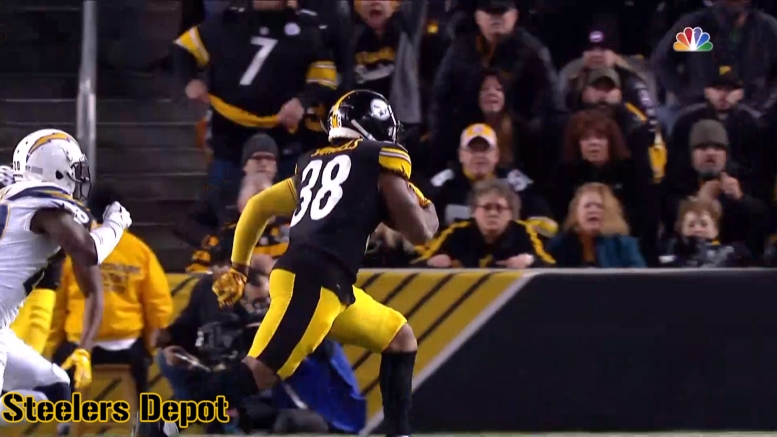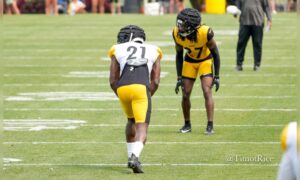As he was going through the pre-draft process, virtually any resource that you might peruse had Jaylen Samuels out of North Carolina State listed as a tight end. He had been used as a sort of jack of all trades in their offense, and in fact had more receptions over the course of his college career than he did carries.
Generally speaking, the extent to which he was asked to do traditional running back work was relatively minimal in college. So it wouldn’t be a great shock if he wasn’t being regarded as a running back in the pre-draft process. But that was the position that the Pittsburgh Steelers drafted him to play. it’s also the position he was planning to play.
“That is what I wanted”, he told the team’s website recently. “I knew coming into the league I was going to play running back. I didn’t play running back in college, but I knew coming into the league that was going to be my position in the NFL”.
After all, that is the position that fits his body type. Listed at six feet and 225 pounds, he doesn’t have the height to play tight end, and he would also be pretty limited as a wide receiver, but his skill set in the passing game would lend itself well to the directions the running back position has taken in recent years.
Samuels wasn’t even guaranteed a roster spot as a fifth-round draft pick, but he earned his way onto the 53 and slowly emerged as the number two back, finishing his rookie season with 56 carries for 256 rushing yards in addition to 29 receptions for 199 yards and three touchdowns. Most of that production came in three starts in the final quarter of the season.
“I knew what came with the job, what I had to do with pass protection, the physical side of it”, he said of transitioning to running back in the pre-draft process, likely informed by his then-and-now position coach, Eddie Faulkner.
“I was watching different stuff on film. I started looking at what type of coverages they run, the pressures they bring, stuff like that, what type of front they are in. Adjusting to that was a key”, he went on. “Changing my game from a receiver to a running back, that was the biggest transition I did. I feel like I did pretty well with it. I knew what came with it, I was ready for the task”.
As it currently stands, he is slotted to enter the 2019 season as the backup to starter James Conner, but the Steelers are likely to add to the position via the draft as well after they elected not to re-sign Stevan Ridley. They do retain Trey Edmunds from last season as well, who spent most of the year on the practice squad.








